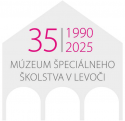Abbé Charles-Michel de l´Épée
France has played a big role in the development of care for hearing disadvantaged individuals. The main characters were French intellectuals such as Denis Diderot and Jean-Jacques Rousseau, who in their works addressed the issues of education and training of disabled individuals.
Roman priest Abbé Charles-Michel de l’Épée is credited with the establishment of the first institution for deaf-mutes in Paris in 1770 which was later named as the National Institute for the Deaf. De l’Épée tried to provide education to as many deaf people as possible. He was a pioneer in the use of sign language in teaching deaf-mutes. Whilst clarifying concepts and interpretation of the curriculum he used natural signs which he himself created. When teaching, he combined his own signs with finger alphabet and writing. Firstly, he wrote the letters into the shape of the object and when students understood what object is represented by the letter, he then wrote them into the line.
His follower was Roch Ambroise Cucurron Sicard who continued in his unfinished work. Summary methodics of teaching the deaf was named French methodology -manual, mimic and sign methodology.


